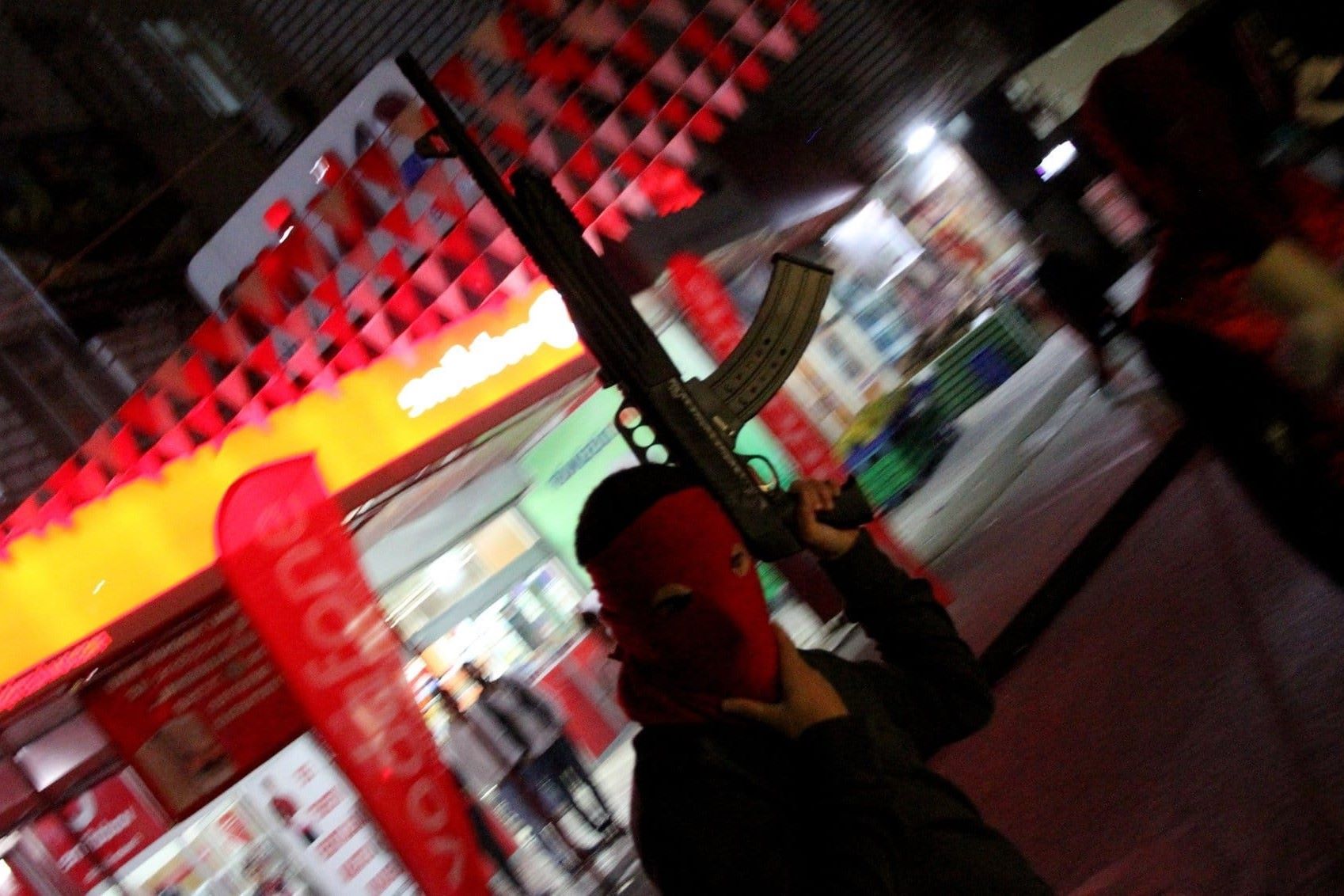
The DHKP/C insurgency in Turkey has been a significant and complex issue for decades. This left-wing militant group, known as the Revolutionary People's Liberation Party/Front, has been active since the 1970s. Their goal is to overthrow the Turkish government and establish a Marxist-Leninist state. Understanding the DHKP/C insurgency involves looking at their history, tactics, and impact on Turkish society. From high-profile assassinations to bombings, their actions have left a mark on the nation. Why does this insurgency persist despite numerous crackdowns? What drives their ideology? In this post, we'll explore 30 key facts that shed light on this ongoing conflict. Buckle up for a deep dive into the turbulent world of the DHKP/C insurgency.
Key Takeaways:
- The DHKP/C, a Marxist group in Turkey, has a history of violence, including assassinations and bombings, leading to international designation as a terrorist organization.
- The group recruits youth, funds operations through extortion and drug trafficking, and has a significant impact on Turkish society, despite public condemnation.
Origins of DHKP/C
The DHKP/C, or the Revolutionary People's Liberation Party/Front, has a complex history rooted in Turkey's political landscape. Understanding its origins provides insight into its motivations and actions.
- Founded in 1978: The group was initially known as Devrimci Sol (Revolutionary Left) before rebranding in 1994.
- Marxist-Leninist Ideology: DHKP/C follows a Marxist-Leninist ideology, advocating for a socialist revolution in Turkey.
- Splinter Group: It emerged from a split within the Turkish People's Liberation Party-Front (THKP-C).
Key Activities and Operations
DHKP/C has been involved in numerous activities and operations, often marked by violence and radical actions.
- Assassinations: The group has carried out high-profile assassinations, targeting Turkish officials and foreign diplomats.
- Bombings: Known for orchestrating bombings, including attacks on government buildings and public spaces.
- Kidnappings: Engaged in kidnappings to leverage political demands.
- Bank Robberies: Used bank robberies to fund their operations.
Notable Incidents
Several incidents have brought DHKP/C into the international spotlight, highlighting their methods and impact.
- 1996 Sabancı Center Attack: Assassinated Özdemir Sabancı, a prominent Turkish businessman, in his office.
- 2013 U.S. Embassy Bombing: A suicide bomber attacked the U.S. Embassy in Ankara, killing a security guard.
- 2015 Istanbul Courthouse Siege: Took prosecutor Mehmet Selim Kiraz hostage, leading to a deadly standoff.
Government Response
The Turkish government has taken various measures to counter DHKP/C activities, often involving significant resources and coordination.
- Counter-Terrorism Operations: Conducted numerous raids and arrests targeting DHKP/C members.
- Legislation: Enacted laws to curb terrorist financing and recruitment.
- International Cooperation: Collaborated with other countries to track and apprehend members abroad.
International Designation
DHKP/C's activities have led to its designation as a terrorist organization by several countries and international bodies.
- U.S. Designation: Listed as a Foreign Terrorist Organization by the United States since 1997.
- EU Designation: Recognized as a terrorist group by the European Union.
- UN Sanctions: Subject to United Nations sanctions, restricting their financial and operational capabilities.
Recruitment and Membership
Understanding how DHKP/C recruits and maintains its membership sheds light on its resilience and persistence.
- Youth Recruitment: Targets young, disillusioned individuals, often from impoverished backgrounds.
- Propaganda: Uses propaganda to spread its ideology and attract new members.
- Training Camps: Operates training camps to indoctrinate and prepare recruits for operations.
Financial Sources
Funding is crucial for DHKP/C's operations, and they have developed various methods to secure financial resources.
- Extortion: Engages in extortion of businesses and individuals.
- Drug Trafficking: Involved in drug trafficking to generate income.
- Diaspora Support: Receives financial support from sympathizers in the Turkish diaspora.
Impact on Turkish Society
The presence and actions of DHKP/C have had a profound impact on Turkish society, influencing politics, security, and public perception.
- Public Fear: Created a climate of fear and insecurity among the public.
- Political Polarization: Contributed to political polarization and radicalization.
- Economic Costs: Imposed significant economic costs due to security measures and damages from attacks.
Media and Public Perception
Media coverage and public perception play a crucial role in shaping the narrative around DHKP/C and its activities.
- Media Coverage: Extensive media coverage of their attacks has amplified their message.
- Public Condemnation: Widespread public condemnation of their violent tactics.
- Sympathizers: Despite condemnation, some segments of society sympathize with their cause.
Current Status and Future Outlook
The current status and future outlook of DHKP/C remain uncertain, influenced by various internal and external factors.
- Leadership Changes: Frequent changes in leadership due to arrests and assassinations.
- Continued Threat: Despite setbacks, DHKP/C continues to pose a threat to Turkish security.
Final Thoughts on the Dhkp/C Insurgency
The Dhkp/C insurgency in Turkey has left a significant mark on the country's history. Understanding the key events and figures involved helps us grasp the complexity of this conflict. From its origins in the 1970s to its ongoing impact, the Dhkp/C has been a persistent force. The group's ideology, tactics, and notable attacks have shaped both domestic and international policies. While the Turkish government continues to combat this insurgency, the Dhkp/C remains a symbol of resistance for some. Knowing these facts not only informs us about Turkey's past but also provides insights into current geopolitical dynamics. As we move forward, staying informed about such groups is crucial for understanding the broader context of global terrorism.
Frequently Asked Questions
Was this page helpful?
Our commitment to delivering trustworthy and engaging content is at the heart of what we do. Each fact on our site is contributed by real users like you, bringing a wealth of diverse insights and information. To ensure the highest standards of accuracy and reliability, our dedicated editors meticulously review each submission. This process guarantees that the facts we share are not only fascinating but also credible. Trust in our commitment to quality and authenticity as you explore and learn with us.
